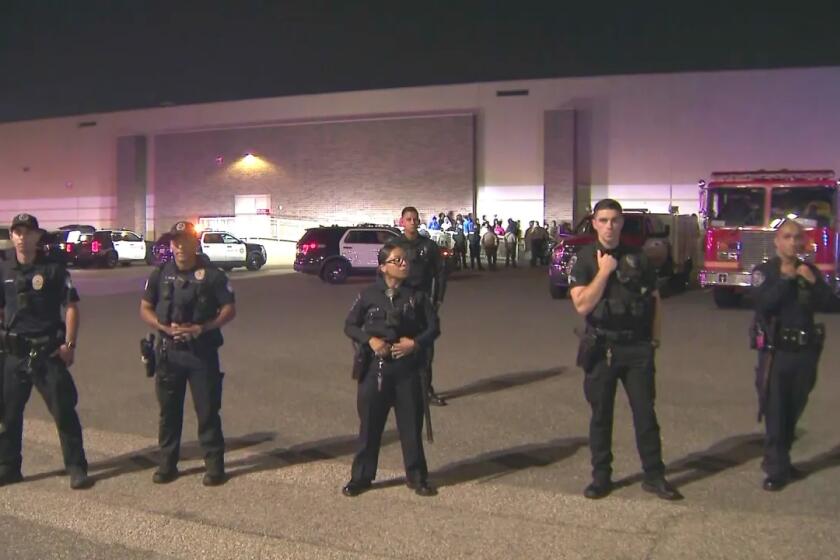How Many Fail DMV Written Test: a) Some? b) Lots? c) Most?
Are half the motorists in California incompetents?
One would hope not, but you wouldn’t know it by how poorly they perform on the Department of Motor Vehicles’ written license tests--so poorly that the DMV made the test easier to pass.
A study commissioned last year by the DMV left agency officials stunned by how poorly license applicants are performing: People are failing more than half the time they take the test.
Individuals taking the test in English for the first time fail a stunning 64% of the time, while the failure rate for Spanish-language takers is even higher, at 75%. In some field offices around the state, the overall failure rate is 82%. The study was based on a two-day sampling of tests administered at every DMV field office. A lot of California residents have suspected for some time that this was the sorry state of affairs. A Your Wheels reader from Redondo Beach recently wrote about his visit to a DMV office, where he learned that the woman in line ahead of him had answered every question on the test wrong.
“I walked to my car in the DMV lot,” he wrote, “and it came to my mind: Am I driving on the streets with the person who missed all the questions on the test?”
Ray Peck, the nationally respected chief of research at the DMV in Sacramento, is no less concerned.
“We were shocked and surprised at the magnitude of the rate of the failure,” Peck said. “It implies a lack of knowledge. It is always possible that there are other issues--language skills or poor reading comprehension.”
Of course, the DMV attempts to ensure that English-language skills are not an issue. It administers the driving test in 34 languages, including Hmong, Arabic, Vietnamese, Chinese and, of course, Spanish.
Under current state law, drivers have to be tested every 12 years. For people with lousy records, testing is more frequent. Across the vast territory of California, 6 million tests are given annually--which means that legions of applicants go home feeling humbled and maybe a little stupid every year. By contrast, drivers in other states pass tests 80% of the time, experts say.
After DMV officials got over their shock regarding the study, titled “Evaluation of the Class C Driver License Written Knowledge Tests,” they set to work on solving the problem.
The DMV’s tests attempt to determine people’s knowledge of traffic laws and check their basic understanding of motoring. The test has a multiple-choice format, with four possible answers for every question.
The department decided that the problem was not with ignorant test takers but the test itself. DMV decided that people were failing the test when they had the knowledge and skill to pass it.
The way to get more people to pass the test? Change the format to multiple choice with three, instead of four, possible answers. Was DMV dumbing down the test for Californians?
“That is something somebody could say,” Peck said. “When you give three choices instead of four, you will increase the chance of passing. To the extent that the three choices give you more of a random chance of getting questions right, there is some validity to that statement.”
But the DMV believes the new format helps test applicants’ knowledge of driving rather than their reading and test-taking skills. Giving one fewer answer reduces the reading load on the applicant, Peck said. Moreover, DMV officials note that the agency had a three-answer format before 1996.
Many states have even easier tests with a true-false format. Some states never require motorists to take a written test after they get their license for the first time.
*
DMV officials are still assessing how the change is affecting the failure rate. But early indications, not surprisingly, are that more people are passing the test.
Jim McKnight, who runs Transportation Research Associates in Annapolis, Md., and is regarded as one of the nation’s top experts on driver testing, does not fault the DMV for changing the test.
“I totally agree with them,” McKnight said. “California is the leading state in anything having to do with licensing.”
McKnight said it is often difficult to find a fourth answer that is not obviously false. That’s because there is typically one false answer that is skewed on one side of the correct answer and another false answer skewed on the other side.
The real problem in California, McKnight said, is that the state has a large population of immigrants who come from countries where few people drive. The first time they are exposed to a car culture is when they get to the U.S.
But the high rate of failure on tests in California ignores a more fundamental issue: Are these driving tests really a good measure of skill behind the wheel? Next week, I’ll take up that issue.
*
Ralph Vartabedian cannot answer mail personally but will attempt to respond in this column to automotive questions of general interest. Write to Your Wheels, Business Section, Los Angeles Times, Times Mirror Square, Los Angeles, CA 90053. Via e-mail: ralph.vartabedian@latimes.com.
More to Read
Start your day right
Sign up for Essential California for news, features and recommendations from the L.A. Times and beyond in your inbox six days a week.
You may occasionally receive promotional content from the Los Angeles Times.







